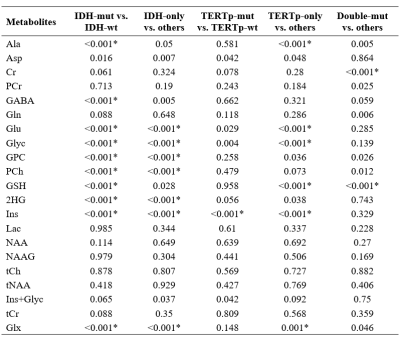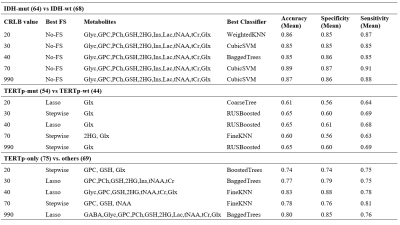Abdullah Bas1, Banu Sacli-Bilmez1, Ayca Ersen Danyeli2,3, Cengiz Yakicier3,4, M.Necmettin Pamir3,5, Koray Ozduman3,5, Alp Dincer3,6, and Esin Ozturk-Isik1,3
1Institute of Biomedical Engineering, Bogazici University, İstanbul, Turkey, 2Department of Medical Pathology, Acibadem Mehmet Ali Aydinlar University, Istanbul, Turkey, 3Center for Neuroradiological Applications and Reseach, Acibadem Mehmet Ali Aydinlar University, Istanbul, Turkey, 4Department of Molecular Biology and Genetics, Acibadem Mehmet Ali Aydinlar University, Istanbul, Turkey, 5Department of Neurosurgery, Acibadem Mehmet Ali Aydinlar University, Istanbul, Turkey, 6Department of Radiology, Acıbadem Mehmet Ali Aydinlar University, Istanbul, Turkey
1Institute of Biomedical Engineering, Bogazici University, İstanbul, Turkey, 2Department of Medical Pathology, Acibadem Mehmet Ali Aydinlar University, Istanbul, Turkey, 3Center for Neuroradiological Applications and Reseach, Acibadem Mehmet Ali Aydinlar University, Istanbul, Turkey, 4Department of Molecular Biology and Genetics, Acibadem Mehmet Ali Aydinlar University, Istanbul, Turkey, 5Department of Neurosurgery, Acibadem Mehmet Ali Aydinlar University, Istanbul, Turkey, 6Department of Radiology, Acıbadem Mehmet Ali Aydinlar University, Istanbul, Turkey
CRLB values of GPC, PCh, 2HG, and Ins were different
between the IDH and TERTp mutational subgroups of gliomas. Different CRLB
thresholds followed by zero-imputing resulted in similar classification accuracies
for IDH and TERTp mutations.

